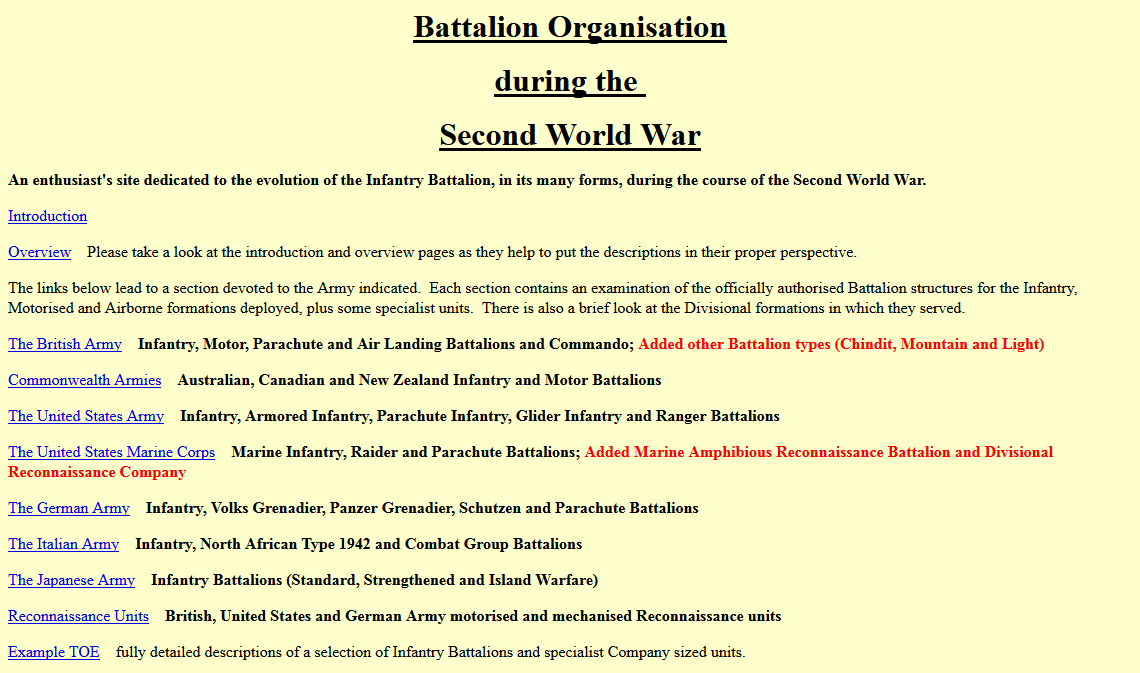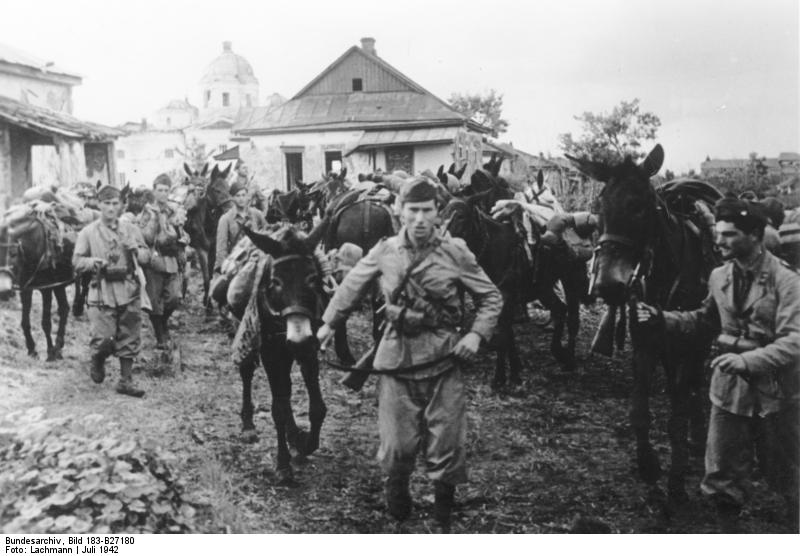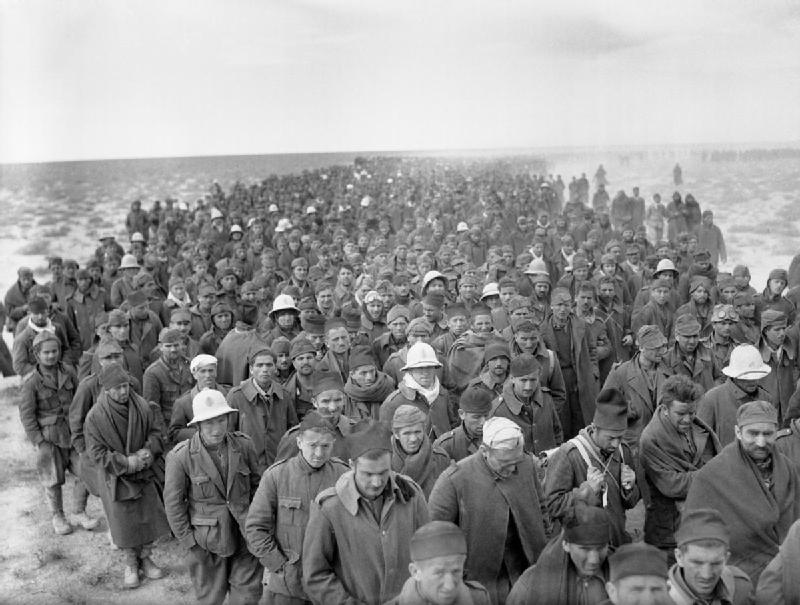I don’t have the information as to arrival times of Italian units on the Eastern Front an hand any more, but seem to recall that it was difficult to justify them all being available on the Jul I 1941 turn — some I think arrived after the 15th. But I can not confirm this. You may wish to consider historical alternatives. The Italian High command also considered other options as to the troops to be sent to the Eastern Front. They considered sending (1) a corps of two celere divisions and one armoured division or (2) a corps consisting of two armoured divisions and one celere division in addition to the option they finally chose.
I have suggestions as to the ratings of Italian units during the period of Total War.
9ª Divisione Autotrasportabile «Pasubio»
52ª Divisione Autotrasportabile «Torino»
These two divisions were part of the Italian army’s regular establishment and were complete at the start of the war. They had only a minor involvement in the Western Alps campaign of June 1940. During the period July 1940 to March 1941, they were were involved in hard training in northern Italy. This paid off in the Yugoslav campaign in the spring of 1941, were the divisions were considered to have performed very well.
It was on the basis of this performance and their intrinsic mobility they were chosen for service on the Eastern Front. These two divisions were re-organized in late June and early July 1941, as they prepared to be sent to the Eastern Front. The 9th Pasubio Division received the 5th Cosseria Division’s Mortar Battalion and an AT company from one of the Bersaglieri regiments. Its artillery regiment was fully motorized.
The 52nd Torino division got the 26th Assietta Division’s Mortar Battalion and the AT company from the Bersaglieri regiment of the 1st Eugenio di Savoia Celere Division. Its artillery regiment was also fully motorized. It is also reported that at sometime in 1941, 81 mm mortars replaced the 45 mm ones in the support company of each battalion of this and the Torino Division. This would be easy to dismiss this but there are some numbers to support it. There were 144x 81 mm mortars in the two divisions (72x in each) according to their establishments listed below, 9x 81 mm mortars in the 63rd CC.NN. Legion for a total of 153 mortars in active service in these formations.
CSIR is supposed to have had 189x 81 mm mortars in active service in the summer/fall of 1941 according to an annex in the logistical history of the Eastern front. The Celere division had none. It is possible that some of the chemical warfare units with CSIR converted into support units in the field as sometimes happened, but they normally became flamethrower units. So it could be possible. It should be noted that a fully equipped 1940 type autotrasportabile division had 45 of these mortars, a 1940 infantry division had 30, and a North African autotrasportabile division had but 12. As mortars were one of the most important killers on the World War Two battlefield, the great increase in the divisional holdings of these weapons must be reflected in the divisional combat ratings.
Leaving aside the question of the question whether the battalion support company had converted to 81 mm mortars, the two divisions had the following establishments during the period of Total War:
Pasubio Division
- 6x infantry battalion
- 2x mortar battalion (54x 81 mm)
- 2x regimental mortar company (18x 81 mm)
- 2x divisional AT company(16x 47/32)
- one group of 100/17 howitzers (12x 100 mm)
- 2x group of 75/27 field guns (24x 75 mm)
- 2x battery of 65/17 infantry guns (8x 65/17)
- 2x battery of 20 mm AA guns (16x 20 mm).
Torino Division
- 6x infantry battalions
- 2x mortar battalions (54x 81 mm)
- 2x regimental cannon company (12x/later 16x 47/32)
- 2x regimental mortar company (18x 81 mm)
- 2x divisional AT company (16x 47/32)
- one group of 100/17 howitzers (12x 100 mm)
- 2x group of 75/27 field guns (24x 75 mm)
- 2x battery of 20 mm AA guns (16x 20 mm).
Given the additional weaponry, the improvements in command and control arrangements, and the heightened combat readiness due to long training and some battle experience, some increase in the combat rating is required for Total War. At a minimum, this division should be rated as a 4-5-8 for Total War, and perhaps it should go to a 5-8.
2x 4-8 Infantry XX 9 Pas, 52 Tor (1940-1941)
2x 4-5-8 Infantry XX (1-6 Inf Cdr) 9 Pas, 52 Tor (1941-1943)
3ª Divisione Celere «Principe Amadeo Duca d’Aosta»
6º Reggimento bersaglieri
120º Reggimento artiglieria motorizzato
This division was also part of the Italian army’s regular establishment and was probably the best of the celere divisions. It could justifiably be called an elite division. It was part of the Italian army’s mobilization covering force in 1940 and took part in the Yugoslav campaign. It was expanded for service on the Eastern front. Its bersaglieri regiment, which had been a bicyclist unit, was converted to a motorized unit. It received the organic bersaglieri motorcycle companies from both the 1st and 2nd Celere Divisions to join its own. It took the organic AT company from the 2nd Celere Division. The division’s armoured cavalry group (III Gruppo Carri Veloci «San Giorgio») was either brought up strength/reinforced from the other two celere divisions. The Horse Artillery Regiment, as mentioned in a previous posting, was reformed to give it a divisional artillery regiment. The three motorcycle companies would eventually be re-organized as one battalion.
During its service on the Eastern Front during 1941/42, the division fought better than a statistical counting up of its elements would suggest. There was a synergy that accounts for its 5-8* suggested rating.
In the first few months of 1942 (e.g.. during TW) the 6º Reggimento bersaglieri and 120º Reggimento artiglieria motorizzato were sent out as part of a planned re-organization of the 3rd Celere. The rest of the new units did not arrive until the summer of 1942 The 120º Reggimento artiglieria motorizzato was a newly raised unit at the depot of the 20º Reggimento artiglieria divisionale «Piave». The Italian official history of the artillery service says it arrived in Russia on the February 15th 1942 and operationally joined CSIR in the second half of March 1942. It was fully motorized in the Europa sense and consisted of one group of 100/17 (12x 100 mm) and two groups of 75/27 (24x 75 mm).
The 6º Bersaglieri Regiment was detached from the 2nd Celere Division on January 20th 1942 and sent to Russia. The exact date of its arrival can be found in the Italian official history that is just on the CSIR operations, probably sometime in February. While it had been a bicyclist unit, the regiment as sent was now fully motorized. Its organic motorcycle and anti-tank companies were already serving with the 3rd Celere Division. The Feb I 1942 conversion in the SE Axis OB should be scrubbed. The process of conversion formally began on March 15th 1942. It was not completed until July 1942 when the horse borne units of the division were formally detached from the division. I think you are looking at a Jun I or Jul I 1942 conversion date in Total Victory with entirely revised values given to the successor units.
Its war establishment during most of Total War was the following:
- 2x cavalry regiment
- 3x motorized Bersaglieri battalion
- 3x Bersaglieri motorcycle company
- 1x armoured cavalry group (61x CV3/35)
- 1x horse artillery regiment (24x 75 mm)
- 2x AT company (16x 47 mm)
- 2x battery of 20 mm AA guns (16x 20 mm).
1x 5-8* Cavalry XX 3 PADA (1941-1942)
1x 6-10 mot Infantry XX 3 PADA (1942-1943)
1x 4-3-8 Cavalry XX Gp RTCR (1942-1943)
1x 2-10 mot Infantry III 6 Br
1x 1-8 mot Artillery III 120
30º Raggruppamento Artiglieria di Corpo d’Armata
This raggruppamento consisted of the following groups: LX (60º), LXI (61º), LXII (62º). Each group was equipped with twelve 105/32 medium howitzers for a total of thirty-six in this formation. The raggruppamento was fully motorized, but I have gone back and forth whether to make it combat/motorized in the Europa sense. On top of this, there is the “stripping” factor I have seen in every FitE/SE game I have played, where useful Axis allied combat units are used to support German stacks the reverse of what happened historically.
I suggest the following two rules in TW to take care of this, at least in part. Only command and control rules would fully take care of it entirely.
1. No artillery unit from Italy or an Axis allied country can provide support for German units. Italian and Axis allied artillery units are halved in strength unless stacked with a division (or equivalent in REs of non-divisional units) from their own country.
2. No Italian combat/motorized non divisional unit with a movement factor of 8 may move in the Exploitation phase unless it begins that phase stacked with an Italian division that is capable of exploitation movement. [This to counter the “stripping” factor and to take into account Italian operational doctrine.]
No additional rules, do not make it combat/motorized.
1x 2-1-8 mot Artillery III 30C
63ª Legione d’Assalto CC.NN.
This regimental sized unit consisted of two M.S.V.N. battalions and one army raised heavy weapons battalion (12?x medium MGs/9x 81 mortars/8x 47/32 AT guns). It appears not have been organically motorized, but usually was by the assignment of corps assets to do so. I would keep the counter as it was in Scorched Earth rather than a 1-6 Infantry III plus 1 RE transport counter.
1x 1-8 mot Infantry III 63 (MSVN)
Battaglione alpini sciatori «Monte Cervino»
No changes from SE Axis OB, keep as a Feb I 1942 reinforcement.
1x 1-8 Ski II MC
CIV Battaglione Mitraglieri di Corpo d’Armata
Italian machine gun battalions should be shown in Europa. They stand for themselves, but also for all the independent flame thrower, mortar, and chemical (converted in the field to the former two types) companies/battalions not presently shown. The 100 series battalions were fully motorized and can be considered combat/motorized for Europa.
1x 1-8 mot Machingeun II 104
IV Gruppo cannoni contraerei da 75/46 autocampali
XIX Gruppo cannoni contraerei da 75/46 autocampali
These two groups were not strong enough to be normally shown at the Europa level. However, I think they should be shown if people agree with the rationale I have come up with on how to represent Italian AA. There was originally a very long explanation of how Italian AA should be rated in this text, but I have cut it out because it was far too long to include in a message ostensibly about the CSIR. So given that other things are factored in, these two groups should be shown as 0-8 lt Anti-Aircraft II’s with AA strength of 1. The 75/46 was a good AT gun when pressed into service, but something has to be lost to give these units an AA factor.
2x 0-8 lt Anti-Aircraft II (AA=1) 4, 19
The following is my recommendation for Total War (an asterisk following the unit’s combat values means it is self supporting):
Suggested Italian Historical Force Pool for Total War:
2x 4-5-8 Infantry XX 9 Pas, 52 Tor
1x 5-8* Cavalry XX 3 PADA
1x 2-10 mot Infantry III 6 Br
1x 1-8 mot Infantry III 63 (MSVN)
1x 1-8 Ski II MC
1x 2-1-8 mot Artillery III 30C
1x 1-8 mot Artillery III 120
1x mot Machingeun II 104
2x 0-8 lt Anti-Aircraft II (AA=1) 4, 19
Suggested Italian Optional Force Pool for Total War:
1x 5-8* Cavalry XX 1 EdS
2x 4-8* lt Armour XX 131 Cen, 133 Lit



